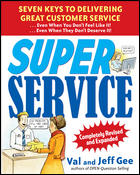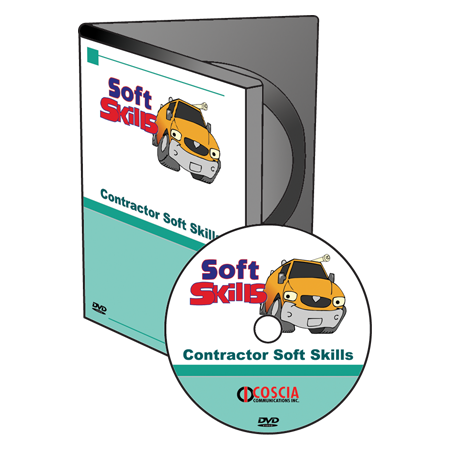Managing Customer Complaints

Most of your competition spend their days looking forward to those rare moments when everything goes right. Imagine how much leverage you would have if you spend your time maximizing those common moments when it doesn’t. – Seth Godin
It’s probably a safe assumption to say that the sales world has exhausted an incompatible amount of effort tutoring salespeople on how to get sales and new clients; however, extremely little is ever said about being focused on continuing these relationships. The most important reward without a doubt will go to those who not only start a high-quality relationship but also maintain it over the long haul. Improperly and therefore unsuitably handling customer complaints is probably the fastest way to destroy rapport with your client, their future business and your success of referrals.
The major solution to managing complaints is to react promptly. What seems to get salespeople in trouble the most is not the complaint but their slow response time. The longer you wait, the more convinced she becomes that you will do nothing and her anger and frustration grows proportionately. Your customer will see this phenomenon as the “Slow No.”
Understandably, none of us like criticism or conflict, and that may be the reason so many of us are so reluctant to face complaints promptly. In reality, handling a complaint is a perfect opportunity to show your customer how much you care and how resourceful and proficient you are. Buyers with a problem expect to be taken more seriously now than during the purchasing stages. It’s one thing to have problems, but it is quite another not to handle them on a timely basis. Think to yourself: How would you feel if you were enduring this problem?
Let’s talk courtesies, because it counteracts the barriers with handling complaints. Once notified, a quick phone call can create incredible goodwill. Let her know that bringing the problem to your attention is appreciated. To further enhance communication, it’s a good idea to simply say, “I am returning your call and I understand there is a problem. Please tell me more about what is wrong.” Display the right integrity by showing real compassion and concern for the chance to assist the purchaser. This practice can diffuse minor problems before they grow into volatile situations.
When the customer has a problem, make listening your priority. Right or wrong, at this point just listen to your customer. Let the customer vent; she needs to get her frustration out of her system.
After listening to a complaint, like managing simple objections—feed it back. Simply restate the complaint in your own words to get clarity and let her know you understand. Let the customer know that you are in her corner and that you understand her dilemma; “So, what you are saying…” and then listen attentively for her response.
Next cushion: “I understand just how you must feel, and I would feel exactly the same way if I were in your situation.” Or, “I apologize for putting you through this situation.” Cushioning lets the customer know that her problem is important and that you understand her difficulty. Cushioning breaks down defenses and puts you on the same side. Not many people will argue with themselves.
Customers who are upset sometimes make hollow threats. If a customer says, “I want my money back,” or “I wish to cancel,” other solutions may be presented by stating, “I understand your frustration (cushion), and I could try to do that for you. However, I am not sure how that would help you in this situation.” Followed quickly by: “Actually, I would prefer to solve your problem because I think it would be simpler for all of us.” As another example: “Mrs. Smith, I am finding myself caught in the middle of this unpleasant situation just like yourself. Naturally, I care about your concerns; let’s look into some solutions that will satisfy your problem? What about...?”
If she doesn’t care about your losses (at the moment), don’t belabor the subject. At least they got presented briefly and maybe she will consider your plight later if she is ever willing to accept a win-win solution.
Here is another strong-arm tactic customers sometimes try when they feel letdown: “I am calling my lawyer!” Don’t get overly intimidated, but be tactful: “I am trying to help you with this problem. However, if we get into lawyers, then your lawyer will just end up talking to my lawyer instead of us focusing on an appropriate solution.” This may expose the futility of the threat and construct a win-win solution.
Seriously consider going to the job site immediately to inspect the situation personally. Often, you owe the customer this common courtesy. However, if you are not thoroughly qualified and experienced, it is imperative that you bring someone with you who is. Construct advance solutions that may help you solve or diffuse the problem. You are a one-person customer-satisfaction department. You are a friend and a resource.
If at the onset the difficulty appears to be a complex, gather as many details in advance as possible and then make the call. Try to check with your installer initially. He or she could be your most reliable insight, but be open to the customer’s expectations. (Realize that your customer’s testimony may be quite different.) Also, check with your account representative, technical services of the supplier or your upper management. Regardless of the extent of the difficulty, keep the relationship strong by sincerely looking into the problem and solving it!
Balance the two verdicts, if there are two, with understanding, but don’t initially take definite sides unless the problem is obvious. Wait for the final judgment without jumping to conclusions, but show concern. Let the consumer know that you want to resolve the problem. Keep a workable and adaptable attitude. If you get overly defensive (or angry), you are dead in your ability to solve the problem. Communication is the main priority at this stage.
Even if your early discovery stays inconclusive, contact the client to inform them of your efforts to solve their dilemma before they feel the need to complain again. In not doing so, you are not only procrastinating conflict; you are escalating the apprehension and tension of your customer.
Caveat - If you commit to repairs or replacement prematurely, you considerably increase the potential difficulty of your problem. Again, unless the problem is conclusive, depending on your experience and the circumstances, wait for all the facts. Usually more specifics will emerge and problems are often greatly exaggerated. As a manufacturer’s representative, I experienced this problem frequently when inspecting job sites. The customer was expecting replacement when the problem was merely a maintenance problem only because the retail salesperson had misinformed her of the wrong problem. Now, we are all “bad guys” because she didn’t get what she expected—a new floor.
Create and test potential solutions with your customer. “I truly understand your aggravation (cushion); so, let’s search for the best solution.” - This is the imaginative part of your differences that need unraveling, and critical wisdom is essential for both of you. Frequently it is hard to generate perfect solutions right away, but the first round of resolutions usually kindle better ones.
Every business has its problems. The floor covering business is entrenched and rooted with them. Part of the problem is that we encounter concealed damage and other installation, manufacturer, transportation delays that are unforeseen. If there is a manufacturing defect, you lose some of your control due to the process of inspection and replacement. Constant follow up is the principal solution.
Occasionally in your sales career, you may find yourself devoting so much time to resolving a customer’s difficulty that you are breaking even or working at a shortfall with that account. Still, since you agreed to meet success standards, your character and future are on the line. Furthermore, your potential earnings and reputation for keeping your promise will remain undamaged and intact.
Complaints and criticisms give us the strength and wisdom to improve and prevent future problems. We can only learn from our mistakes and inaccuracies of operation. Think of complaints like this and you will be more likely to resolve problems quickly, and more efficiently.
Good selling to you!
Looking for a reprint of this article?
From high-res PDFs to custom plaques, order your copy today!








